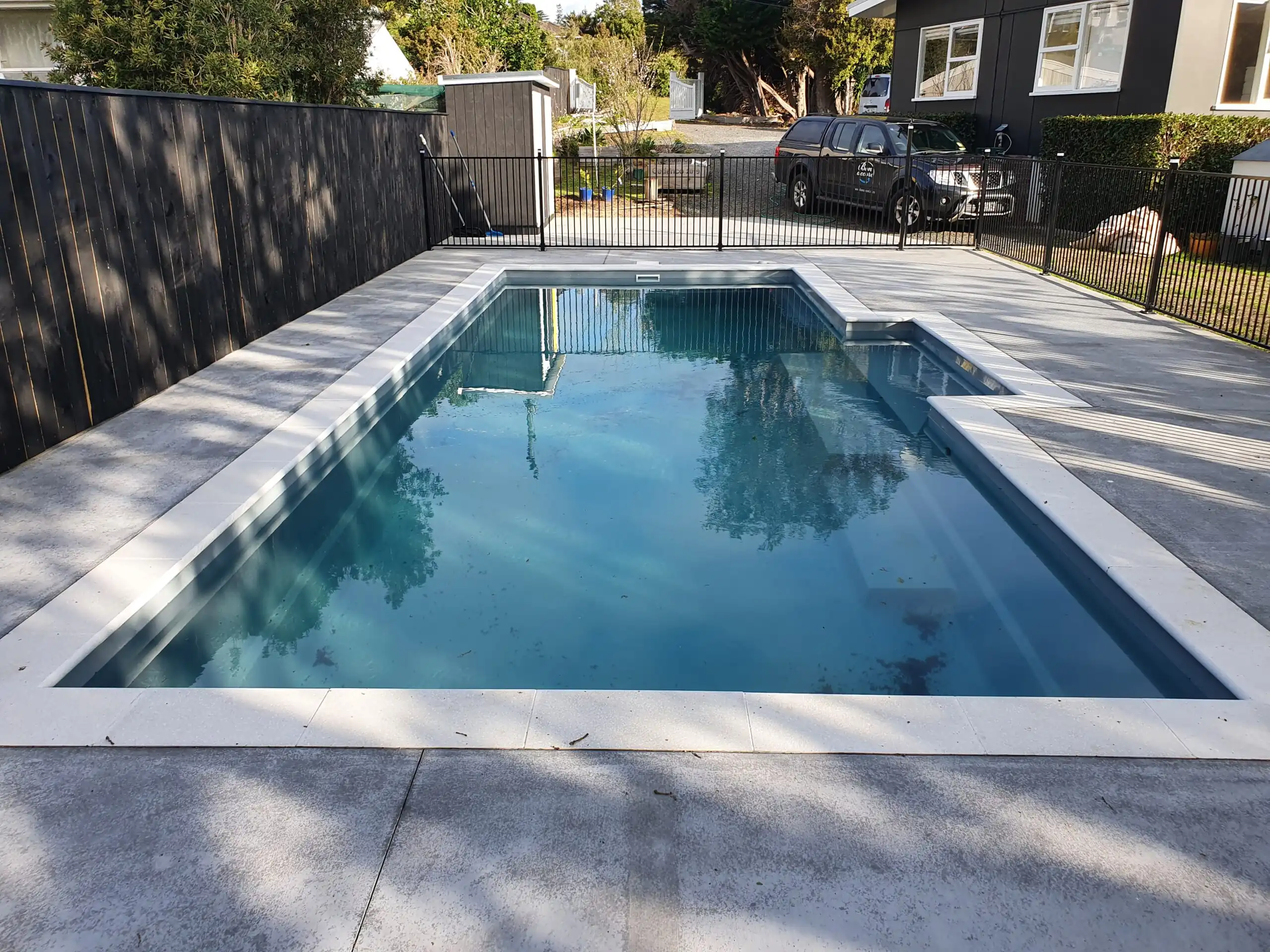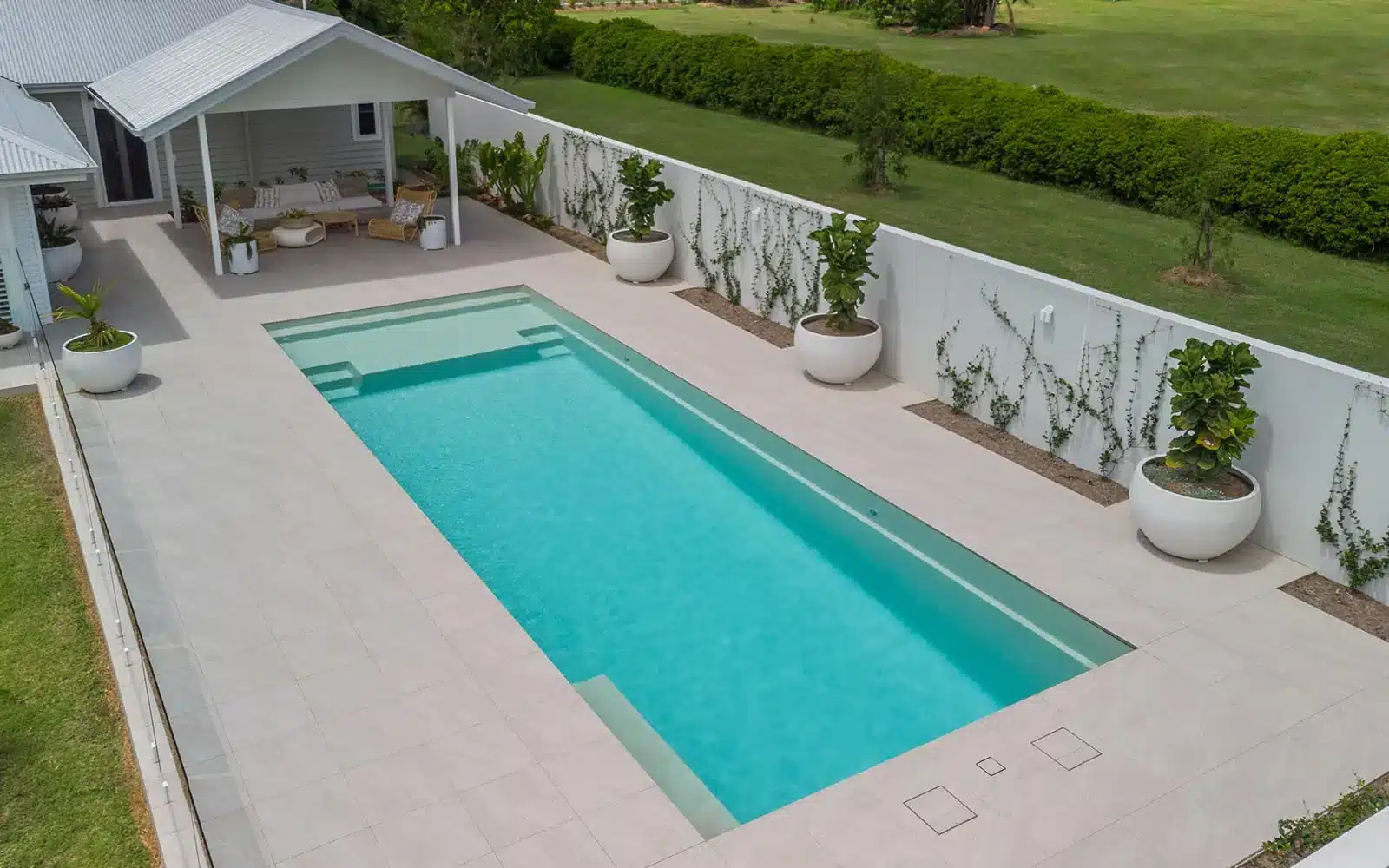
At Principal Pools, we’ve helped hundreds of families create the backyard pool of their dreams. From planning to the last tile installation, our team is here to guide you every step of the way. Whether you’re after elegance, fun, or practicality, we’ll ensure your new pool is everything you imagined—without the hassle.


“I am completely blown away by the level of professionalism from the whole company. I cannot think of a better experience I’ve had. They really have their stuff together.”

“Principal Pools’ fibreglass pools are the best investment I’ve made for my family. The quality and durability of the pool exceeded our expectations.”

“I’m so glad I chose Principal Pools for my fibreglass pool installation. The entire process was stress-free, and the pool is beautiful and easy to maintain.”

“I love my new fibreglass pool from Principal Pools! It’s the perfect addition to our outdoor living space and has already brought so much joy to our family.”

“Principal Pools exceeded my expectations in every way. The team was friendly, efficient, and professional. I highly recommend them to anyone in the market for a fibreglass pool.”

“Excellent service and a very professional company. Edward managed the entire process and he was meticulous over every minute detail. Highly recommend not even looking at any other company.”

“Absolutely fantastic service. They were the only company to deliver what the promised during our renovation. First class and highly recommended”

“From day one when I met Edward he had a clear idea on how the pool will fit in my backyard and worked with the council to get the plans approved and build an amazing pool. Great with communication, very professional, responsive and friendly team of people at Principal Pools. Highly recommend these guys to anyone who wants to build their next pool.”

“I am completely blown away by the level of professionalism from the whole company. I cannot think of a better experience I’ve had. They really have their stuff together.”

“Principal Pools’ fibreglass pools are the best investment I’ve made for my family. The quality and durability of the pool exceeded our expectations.”

“I’m so glad I chose Principal Pools for my fibreglass pool installation. The entire process was stress-free, and the pool is beautiful and easy to maintain.”

“I love my new fibreglass pool from Principal Pools! It’s the perfect addition to our outdoor living space and has already brought so much joy to our family.”

“Principal Pools exceeded my expectations in every way. The team was friendly, efficient, and professional. I highly recommend them to anyone in the market for a fibreglass pool.”

“Excellent service and a very professional company. Edward managed the entire process and he was meticulous over every minute detail. Highly recommend not even looking at any other company.”

“Absolutely fantastic service. They were the only company to deliver what the promised during our renovation. First class and highly recommended”

“From day one when I met Edward he had a clear idea on how the pool will fit in my backyard and worked with the council to get the plans approved and build an amazing pool. Great with communication, very professional, responsive and friendly team of people at Principal Pools. Highly recommend these guys to anyone who wants to build their next pool.”
.
.
.
.
.
.
.
.
.
.
This offers a cut-out step design that welcomes you into the pool and bench area. With six length options, this pool fits comfortably in almost any backyard.
So much in one pool! An impressive array of integrated features, offering a built-in spa, splash deck, gradual sloping floor and deep end swim out bench.
Enjoy a full length bench with a full channel swim parallel to it. It offers a trim width but with four length options, can meet many demanding space considerations.
With the patented Highwater Line, it’s beautiful and ideal for the whole family. Expansive splash deck, with gradual sloping floor, deep end swim out and large swim space.
This pool is a popular option for families who enjoy full-length bench seating paired with a full swim channel within a more trim backyard environment.
Small on space shouldn’t limit your desire to have a pool! This compact formal design offers a long bench down one wall allowing the opportunity to sit and relax in the water!
A perfect addition to your home to give you all the benefits of a soothing spa with simple seating arrangement.
A variation of The Harmony design in that it offers full length bench seating with entry steps but built with a more trim fit for more demanding space considerations.
A variation of The Reflection with its full length bench/seating, this option provides a built-in cover box providing greater safety & security.
A variation of The Reflection with its full length bench/seating, it is complimented with an additional 1.55m, full-width entry splash pad.
A small but versatile plunge pool offering ample swim space and a lovely atmosphere for your home and backyard.













Leisure Pools are proud to cover every one of their pools with a Lifetime Structural Warranty and Lifetime Structural Osmosis Warranty. (35 years)

Explore 11 unique styles and over 30 sizes, designed to suit all types of backyards and spaces. We offer one of the most comprehensive ranges available for fiberglass pools.

Backed by Leisure Pools holding the largest Manufacturing facility in the world with over 24 years in business across 33 Countries.

Leisure Pools are proud to cover every one of their pools with a Lifetime Structural Warranty and Lifetime Structural Osmosis Warranty. (35 years)

Explore 11 unique styles and over 30 sizes, designed to suit all types of backyards and spaces. We offer one of the most comprehensive ranges available for fiberglass pools.

Backed by Leisure Pools holding the largest Manufacturing facility in the world with over 24 years in business across 33 Countries.
Get in touch today and receive a complimentary consultation.

One of the first questions potential pool owners want to know when they call our company is: How much does a fibreglass pool cost?
This cost and pricing guide will help you develop an initial budget and plan for the ownership costs associated with each type of inground pool.
Getting a fibreglass Pool doesn’t have to be a stressful experience, we breakdown everything you need to know about creating your backyard oasis.


Take a peek inside our Wonderworld and Dive into the elegance and style of modern fibreglass swimming pools.
The cost of a fibreglass pool can vary depending on various factors, including pool design complexity, size, and installation site access. Generally, prices range from around $35,000 to over $90,000. Please see our complete “Inground Swimming Pool Cost & Pricing Guide”
Fibreglass pools are incredibly popular, due to a number of reasons. Fast installation time, easy maintenance and they are significantly cheaper in comparison. See our guide on which is better fibreglass vs concrete vs vinyl liner inground pools for a full breakdown.
With a fibreglass pool, you’ll be splashing around in no time! Unlike concrete or vinyl pools, Fibreglass installation process is a lot quicker, typically taking just 2-7 days. Depending on weather and complexity of the installation.
Yes, however, we understand pool fencing and by-laws, can be overwhelming – Don’t worry though we can talk this through with you as every site is different and we know what would be the right fit for your property. You can also check out our guide answering all Pool fencing Questions for New Zealand
“In Auckland, building consent is not required for fibreglass pools or large spas if:
However, all pools with a depth of 400mm or more need a compliant pool barrier, which may require building consent. The need for resource consent depends on the pool’s location relative to boundaries and other structures. For specific cases, like infinity edge pools or pools using boundary fencing as part of the barrier, individual assessment is needed. Portable pools of 35,000 litres or less with specific conditions may qualify for a fixed fee for building consent.” Still overwhelmed? give us a call we can answer your fencing question quickly over the phone – contact us
Still not sure if you want a fibreglass, concrete, or vinyl liner inground pool? Check out our resources section for everything you need to know about inground pools, all in one place.



Available in 3 sizes 8m-12m

Available in 3 sizes 8m-12m

Available in 4 sizes 5m-8m

Available in 5 sizes 6m-10m

Available in 3 sizes 7.9m-9.9m

Available in 2 sizes 8.5m-9.5m

5.70m Long by 2.25m Wide

4.65m Long by 2.20m Wide

1.80m Long by 1.60m Wide

2.90m Long by 2.10m Wide